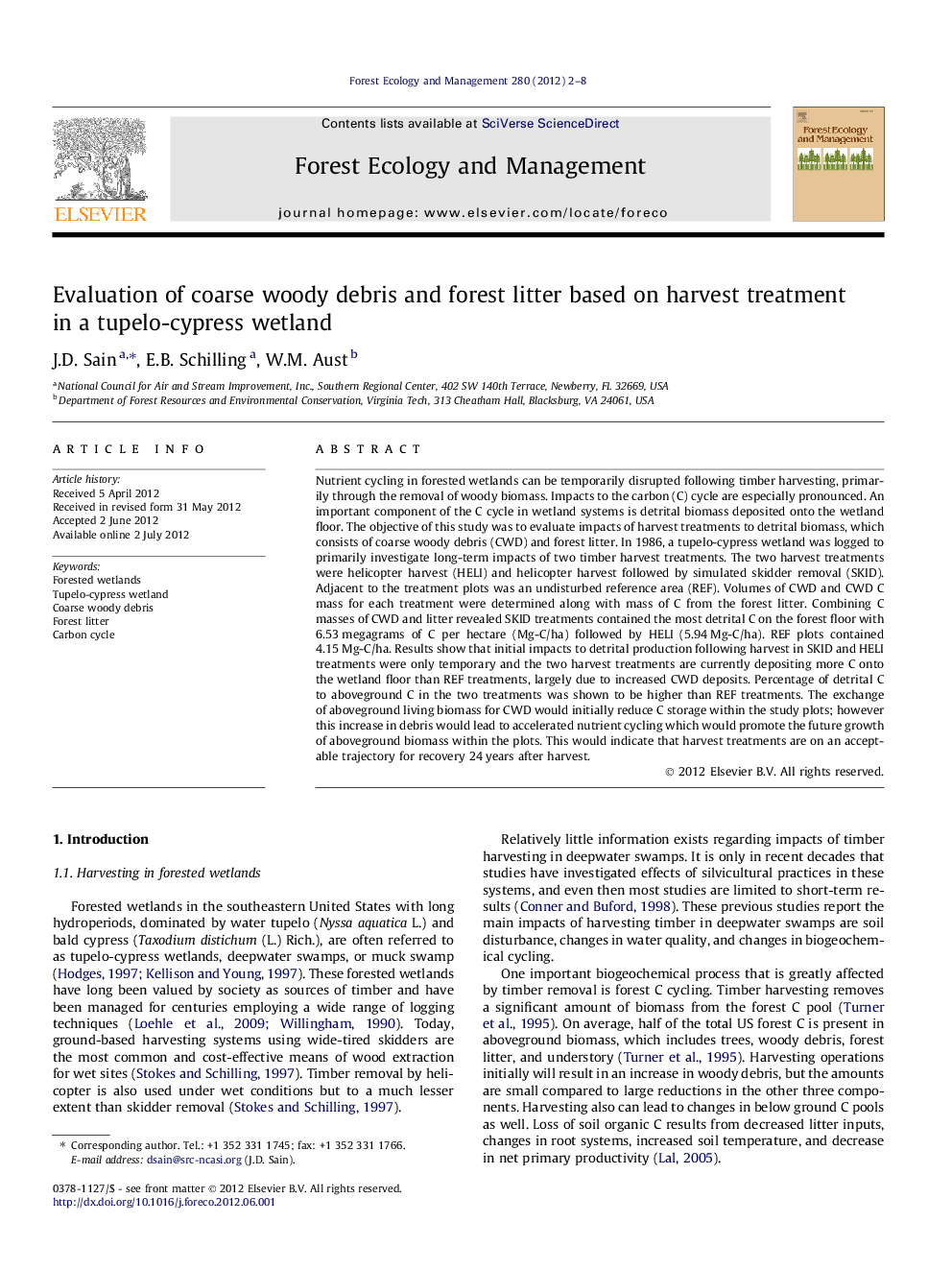| کد مقاله | کد نشریه | سال انتشار | مقاله انگلیسی | نسخه تمام متن |
|---|---|---|---|---|
| 87350 | 159247 | 2012 | 7 صفحه PDF | دانلود رایگان |

Nutrient cycling in forested wetlands can be temporarily disrupted following timber harvesting, primarily through the removal of woody biomass. Impacts to the carbon (C) cycle are especially pronounced. An important component of the C cycle in wetland systems is detrital biomass deposited onto the wetland floor. The objective of this study was to evaluate impacts of harvest treatments to detrital biomass, which consists of coarse woody debris (CWD) and forest litter. In 1986, a tupelo-cypress wetland was logged to primarily investigate long-term impacts of two timber harvest treatments. The two harvest treatments were helicopter harvest (HELI) and helicopter harvest followed by simulated skidder removal (SKID). Adjacent to the treatment plots was an undisturbed reference area (REF). Volumes of CWD and CWD C mass for each treatment were determined along with mass of C from the forest litter. Combining C masses of CWD and litter revealed SKID treatments contained the most detrital C on the forest floor with 6.53 megagrams of C per hectare (Mg-C/ha) followed by HELI (5.94 Mg-C/ha). REF plots contained 4.15 Mg-C/ha. Results show that initial impacts to detrital production following harvest in SKID and HELI treatments were only temporary and the two harvest treatments are currently depositing more C onto the wetland floor than REF treatments, largely due to increased CWD deposits. Percentage of detrital C to aboveground C in the two treatments was shown to be higher than REF treatments. The exchange of aboveground living biomass for CWD would initially reduce C storage within the study plots; however this increase in debris would lead to accelerated nutrient cycling which would promote the future growth of aboveground biomass within the plots. This would indicate that harvest treatments are on an acceptable trajectory for recovery 24 years after harvest.
► Investigated harvest impacts on detritus production 24-years after harvest.
► Helicopter and skidder treatments produced equivalent amounts of debris.
► Helicopter and skidder plots contained more detrital C than reference.
► Study showed no long-term, negative impacts to detritus production.
Journal: Forest Ecology and Management - Volume 280, 15 September 2012, Pages 2–8